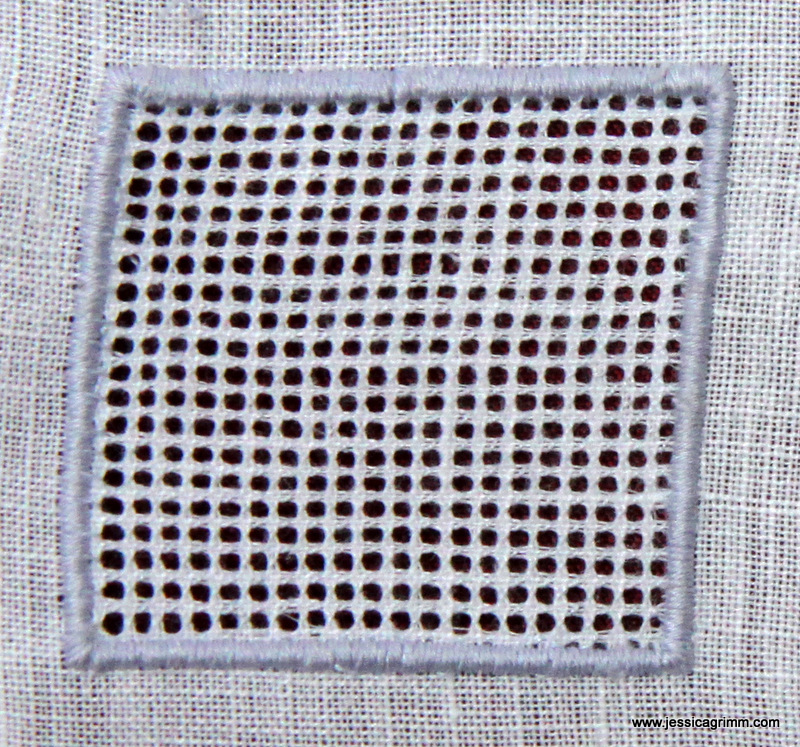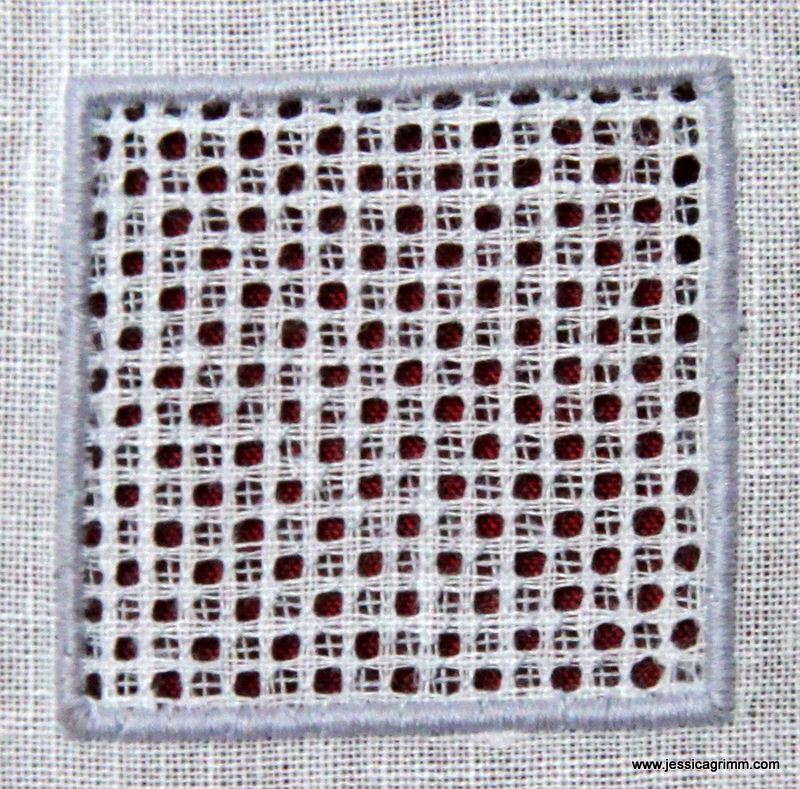|
Did you miss me? Some of you panicked a little last week as there was no fresh blog post on Monday. I apologize. Me was on the road. The road to embroidery bliss that is. I attended a four-day course in Appenzell whitework with Verena Schiegg in Appenzell, Switzerland. This time, I prepared five 3x3 centimetre squares to practise drawn thread work. Which is called höhlen in Appenzell dialect. Working a relatively large area with square boundaries allowed me to really get the rythm of the stitch into my fingers. Let's examine each square a bit more closely, shall we? The simplest pattern is the Löchler or holes in English. I withdrew every fourth thread in both directions. Not easy on linen with 20 threads per centimetre. Some threads are so fine; they'll break when you work on the filling pattern (can you find the spot in the left hand picture?). This creates slight irregularity in the filling pattern. However, as this is a doodle cloth sampler, I don't really mind. With hind sight, I now know that I could have repaired the area by running an extra thread along the back before starting on the filling pattern. The filling pattern on the right is called Möggler or mosquito in English. I really like this one. The pattern uses a grid of two withdrawn threads and three left in place in both directions. It took me a while to get the four buttonhole stitches right to form the mosquito, but the result is quite nice. You learn so much more from mistakes, than from plain sailing, don't you think? The pattern on the left is called Chrüzler or crosses in English. Not only forms it a pretty pattern, it has a lovely stitching rhythm too. Again, it is worked in a grid with two withdrawn and three standing threads in both directions. The pattern on the right is more of a challenge. It is called the Nolli or zeros and it is much harder to achieve a pleasing uniform look. It is essentially formed of back stitches and woven spiders. As the spider needs a little more space, I worked it in a grid of three withdrawn and three standing threads in both directions. My absolute favourite, my piece de resistance, so to speak, is the Zuppli or pick apart in English. The pretty flowery pattern is worked in a grid with two withdrawn and three standing threads in both directions. It really is very pretty, but needs quite a large area to come to full effect.
These are the first five patterns I learned. In the coming months I will experiment with variations on the Löchler and Möggler. Next time I'll go to Appenzell, I will learn new filling stitches like the Eieler and Wöllestich. And they, of course, have variations too!
4 Comments
Mabel
14/3/2016 11:31:42
Hoi Jessica, wat prachtig dat wil ik ook wel leren groetjes
Reply
Cristy
14/3/2016 16:17:14
Wow! I am doing lots of whitework this year and I really admire the delicate patterns. I guess I will add learning some Appenzell to my bucket list.
Reply
24/3/2016 09:34:20
gratuliere Jessica, die Höhlstiche sind wunderbar geworden!
Reply
Your comment will be posted after it is approved.
Leave a Reply. |
Want to keep up with my embroidery adventures? Sign up for my weekly Newsletter to get notified of new blogs, courses and workshops!
Liked my blog? Please consider making a donation or becoming a Patron so that I can keep up the good work and my blog ad-free!
Categories
All
Archives
July 2024
|
Contact: info(at)jessicagrimm.com
Copyright Dr Jessica M. Grimm - Mandlweg 3, 82488 Ettal, Deutschland - +49(0)8822 2782219 (Monday, Tuesday, Friday & Saturday 9.00-17.00 CET)
Impressum - Legal Notice - Datenschutzerklärung - Privacy Policy - Webshop ABG - Widerrufsrecht - Disclaimer
Copyright Dr Jessica M. Grimm - Mandlweg 3, 82488 Ettal, Deutschland - +49(0)8822 2782219 (Monday, Tuesday, Friday & Saturday 9.00-17.00 CET)
Impressum - Legal Notice - Datenschutzerklärung - Privacy Policy - Webshop ABG - Widerrufsrecht - Disclaimer












 RSS Feed
RSS Feed